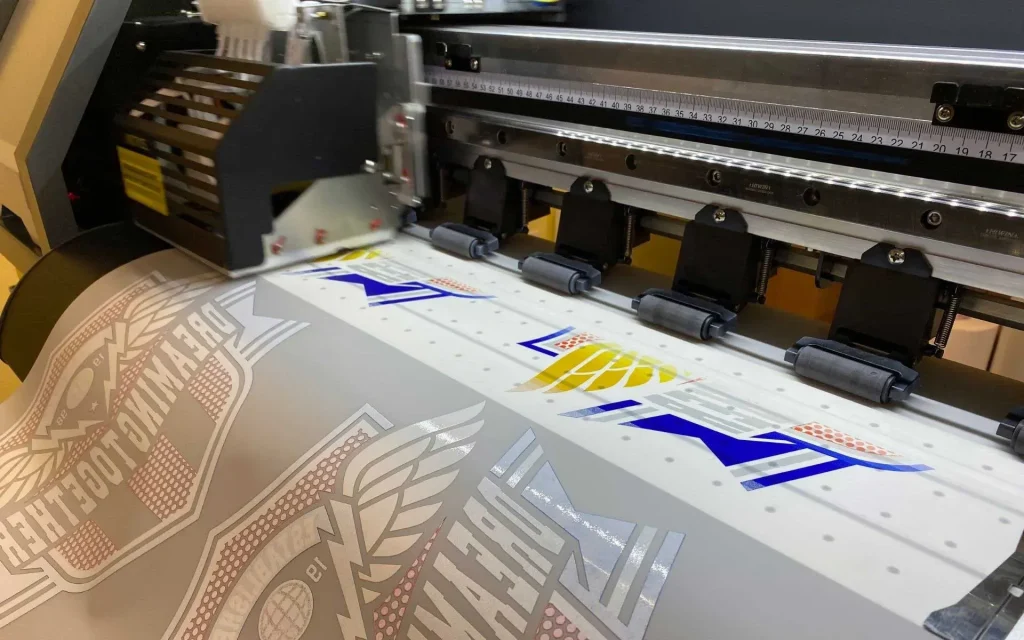In the dynamic realm of textile printing, DTF printing is making waves as an innovative method that offers unparalleled efficiency for creating stunning custom designs. This technique, known as Direct-to-Film Transfers, allows creators to transfer vibrant graphics onto fabrics with remarkable detail and precision. As both small businesses and hobbyists turn to this versatile solution, understanding the DTF printing advantages becomes essential for maximizing its potential. From eye-catching color quality to durable prints, DTF printing applications span across apparel, accessories, and promotional items. With the right knowledge and skills, anyone can harness the power of DTF for their creative projects.
When discussing modern fabric printing methods, one cannot overlook the remarkable benefits of Direct-to-Film Transfers. This state-of-the-art technique stands out for its ability to produce high-quality prints that are not only visually striking but also long-lasting. As we delve deeper into the world of DTF printing, we’ll uncover strategies and best practices that ensure optimal results and sustainable production. With its growing popularity in custom DTF printing, this method is increasingly favored by businesses seeking to provide unique products and artistic expressions. Join us as we explore the trends, applications, and innovations that define the landscape of DTF printing today.
Understanding the DTF Printing Technique
DTF printing, or Direct-to-Film printing, is a groundbreaking method that allows for high-quality custom prints on various fabric types. The process begins by printing a design onto a specially coated film, which is then treated with an adhesive powder. This advanced technique stands out from traditional printing methods by offering heightened precision and a wider color gamut, attracting both businesses and individual customers who seek a superior finish. As the demand for customized merchandise grows, understanding the uniqueness of DTF printing is essential in capitalizing on this modern technology.
Unlike conventional screen printing, DTF printing provides several advantages, especially in terms of design flexibility and color vibrancy. The ability to print intricate designs with fine details and a rich color palette makes it ideal for fashion applications, custom merchandise, and promotional items. Furthermore, its compatibility with various fabric types—from cotton to polyester—enables businesses to cater to a broader audience, enhancing their product offerings.
Frequently Asked Questions
What is DTF printing and how does it work?
DTF printing, or Direct-to-Film printing, is a modern textile printing technique where designs are printed onto a specialized film before being heat transferred onto fabrics. The process involves printing the artwork with water-based inks, applying an adhesive powder, curing the film, and finally using a heat press to transfer the print to the desired fabric, resulting in vibrant and detailed designs.
What are the advantages of using DTF printing for custom apparel?
The advantages of DTF printing for custom apparel include vibrant color quality, versatility with various fabric types, durability against fading and cracking, cost-effectiveness for small runs, and the potential for sustainable practices using eco-friendly inks. These benefits make it a preferred choice for both businesses and DIY projects.
In what applications is DTF printing commonly used?
DTF printing is commonly used in various applications such as custom apparel, including t-shirts, hoodies, and hats. It is also popular for creating promotional items and personalized accessories, allowing brands and individuals to express their unique style and identity through garment decoration.
What are the best practices for achieving high-quality DTF printing results?
To achieve high-quality DTF printing results, best practices include investing in quality materials such as high-grade films and inks, maintaining your printing equipment regularly, testing different inks for optimal compatibility with fabrics, and strictly following recommended heat and pressure settings during the transfer process.
How does DTF printing compare to other printing methods like screen printing?
DTF printing differs from screen printing in that it allows for detailed designs, vibrant colors on various fabric types, and ease of customization for small runs. Unlike screen printing, which can be limited by design complexity and color combinations, DTF provides flexibility and quality for both light and dark fabrics.
What recent developments have been made in DTF printing technology?
Recent developments in DTF printing technology include the introduction of new, specialized printers that enhance the printing process and increase efficiency. Improvements in software have also led to better color accuracy and design capabilities, making DTF printing more accessible and effective for both businesses and individual creators.
| Key Points | Details |
|---|---|
| What is DTF Printing? | A technique that prints designs onto a special film which is then heat transferred onto fabrics. |
| The DTF Printing Process | 1. **Printing:** Designs are printed onto coated film using water-based inks. 2. **Applying Adhesive:** Hot-melt adhesive is sprinkled on wet ink. 3. **Curing:** The film is cured in a heat oven to solidify the adhesive. 4. **Heat Pressing:** The film is heat pressed onto the fabric to transfer the print. |
| Benefits of DTF Printing | 1. **Vibrant Color Quality:** Produces stunning colors. 2. **Versatility:** Works on various fabrics and colors. 3. **Durability:** Resists fading and cracking. 4. **Cost-Effective:** Ideal for small runs. 5. **Sustainable Practices:** Eco-friendly ink options available. |
| Popular Applications | Custom apparel and accessories, promotional items, and unique fashion statements for businesses. |
| Recent Developments | New printers and software improvements enhance DTF printing capabilities and accessibility. |
| Best Practices | 1. Invest in quality materials. 2. Maintain equipment regularly. 3. Test different inks. 4. Follow heat and pressure instructions. |
Summary
DTF printing, or Direct-to-Film printing, has emerged as a transformative force in the textile printing industry, allowing for high-quality, customizable designs on various fabrics. This innovative technique not only offers exceptional color vibrance and durability, but also expands creative possibilities for businesses and individuals alike. As trends evolve, understanding the comprehensive process, its advantages, and best practices will empower creators to fully leverage DTF printing, streamlining their ventures in the ever-competitive world of textile decoration.


